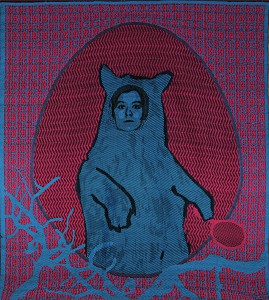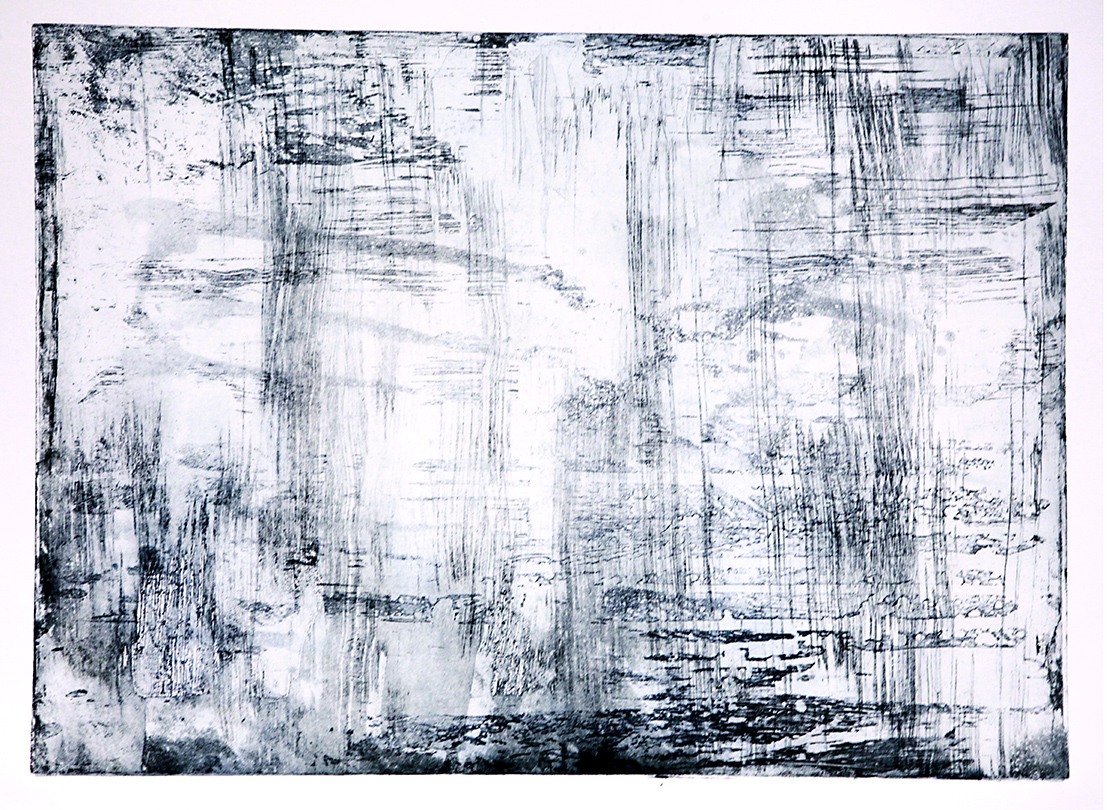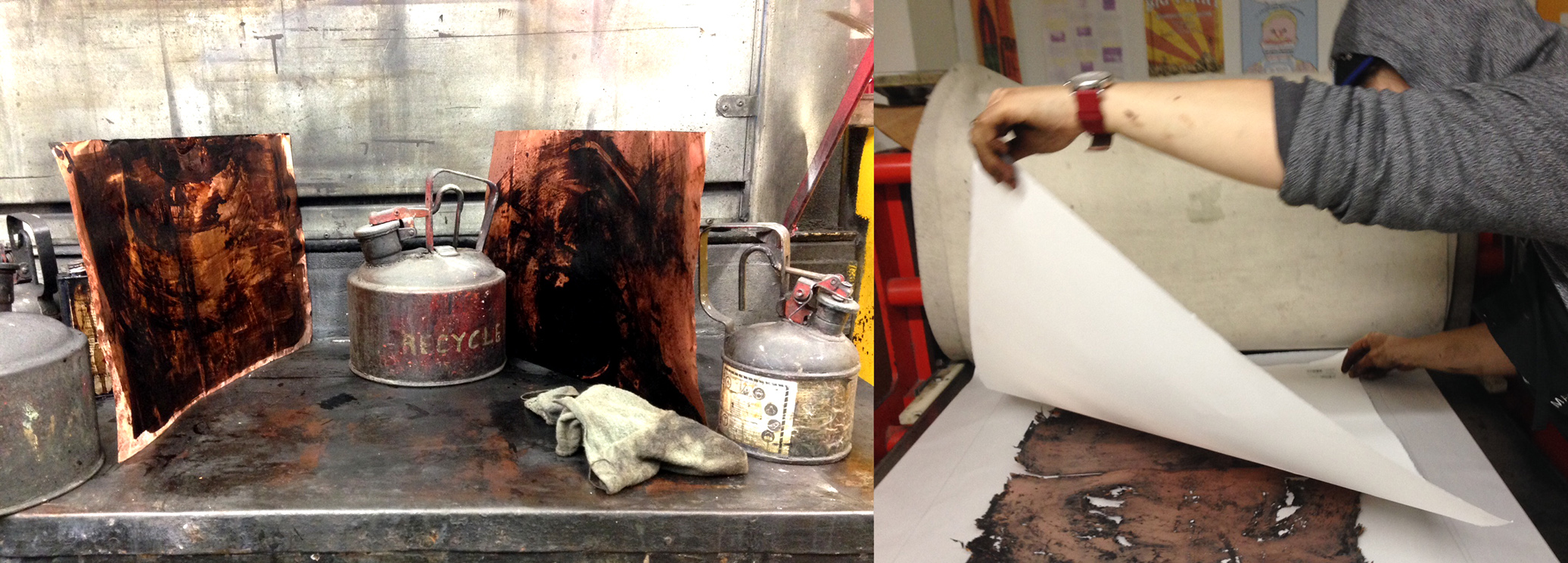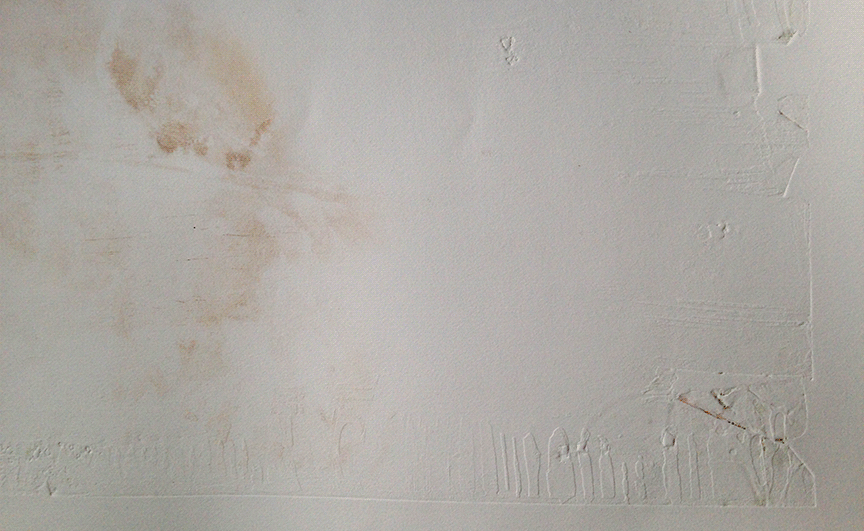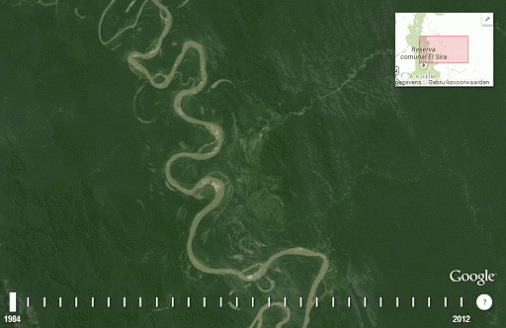Escaping the ASS-U-ME Trap: Fostering paths that create a process of questioning erased and included methods
I am interested in unpredictable gateways and context-specific overlaps that lead to understanding across difference. What is the outside’s path to understand the other (in this case, the inside)? What is the connection? What is that path? And what are the swoops or whoops that help to find, know, and understand these overlaps? In the Re-telling weaving project, I was interested in how pivotal moments—in my case, coming-of-age political rites of passage—are intersections, encounters in life that seep in, help us understand and inform the world around us, and ultimately have the potential to transform us.
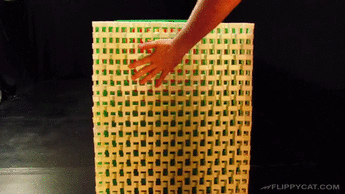
http://www.laboiteverte.fr/des-gifs-3/
I am fascinated by the steps involved in one thing leading to another. The idea of a domino effect is often thought of as random and unpredictable, but even in this simple example, someone was responsible for staging the circumstances that produced a particular outcome.
In a previous project of mine, I was quite fascinated by this same notion, and explored pivotal moments in people’s coming-of-age experiences of politicization. To give you a taste of what I mean, I’ll recount one of my own such gateway moments.
My first big passion, starting at age nine, was the protection of bears. It all began one day while I was playing square ball by myself in the school yard, when just outside of the grounds, three teenage hippy boys were practicing their improv skit in preparation for a Bear Watch demonstration. Curious, I asked to join them and their free-spirited selves couldn’t say no. I was shocked by the idea that bears were killed for sport and, after spending an afternoon dancing in the sun with a tambourine on the Victoria parliament lawn, my love of bears had been fostered. This led me to carry around Bear Watch petitions and flyers and become an outspoken vegetarian, much to the dismay of some of my family.
Over a Sunday family dinner while visiting my grandparents in Salt Lake City, my Grandpa exasperatedly explained, “God put animals on the earth to eat,” to which I replied “I love bears,” (no one will let me live down this testimonial bearing of love.) 18 odd years later I joked with my Grandpa at our family reunion because the veggie lasagna ran out first that night.
The “I <3 Bears” weaving, as part of my larger Re-telling weaving project, helped me realize the significance of the Bear Watch demonstration—a gateway to activism and community outside of my immediate surroundings.
***
It’s easier, of course, to see these gateways in retrospect than to know how to build or actualize them in the moment. But it’s the latter that I’m interested in. In an effort to set up a domino effect within my own academic methods, I decided to engage in an experiment and exercise with some intaglio printmaking. For this bootcamp assignment, by exploring the intaglio medium, I looked at what’s not seen: the byproducts of printmaking. Similar to how we never see the painter’s palette outside of the studio, the public also never has access to the printer’s plates, only what’s transferred from them onto the paper. My bootcamp was an active exploration aimed at both uncovering a gateway and understanding the process of rendering visible the assumptions inherent to the process of making. I was aiming for a series of prints that could trace an intuitive creative process as opposed to more familiar constructed practices of art-making learned during my undergrad. At a conceptual level, I was interested in the assumptions and choices I make as an artist and how these choices are often taken for granted due to the restrictions based on form, medium, and discipline within respected disciplines. I was looking to explore developing new working methods and what, within existing conventions, is either erased or highlighted as a result. Concretely, I hoped to create a process of questioning and reflection within my own process.
So, I printed the backside. The “wrong” thing. The absent side. The whoopsie-daisy! not-supposed-to-be-seen side. I wondered, what could this tell me in relationship to the ideas I’ve been thinking through in this class (the absent and present relationship within cartography, the presumed logic of digital tools, the advantage of distant versus closed reading, and an academic practice of posing questions as a way to generate dialogue rather than placing the emphasis on answers and solutions)?
Ultimately, I wondered if I could, through this process, triangulate my own thinking of other and outside. By inserting something less visible into the frame of reference—in this case the backside of an intaglio print, never meant to be seen outside the studio walls—could this help me glean perspective into something I didn’t already know? What can I learn when I try to displace by-products of a process and insert them into a central location?
***
I also secretly hoped for organic form (non-rectilinear) imagery to be found. Like a dust ball under my bed or some particles swinging in water. After finishing an edition of prints, I wasn’t sure what to think or what this process told me. In an attempt to deform the process of print-making, I was hoping that the output would be the opposite of a constructed linear image, but no such luck; breaking the rectilinear grid isn’t so easy after all. I hoped this process would render a soft and smooth image like a cloud in a weather system graph, mapping vapor, the melt-off of an iceberg, a tide chart, moon phases and forces (all of these magical science systems—forms that draw boxes around ephemeral things). I hoped my print-making image would quantify the un-quantified in the same way that science knows these softer, more invisible movements.
In terms of the traces I hoped to uncover, I was looking for something more akin to what can be seen here:
But alas, I found something more like this:
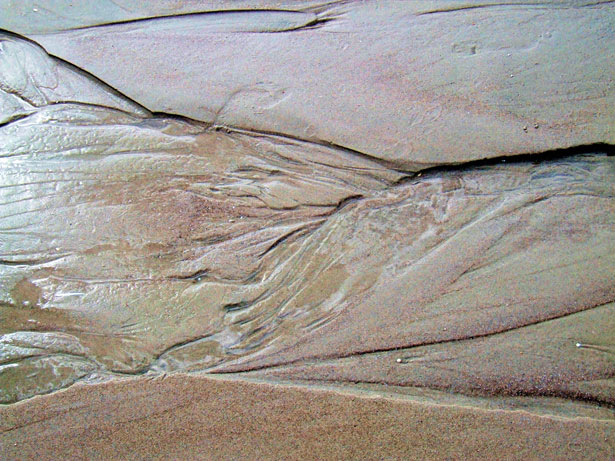
Found when searching public domain pictures + “traces”
Bootcamp Reflections
Incidentally, in an act of self-preservation, I decided to productively procrastinate by baking some cookies. Sadly (or rather not so sadly at all) my oven’s bake burner has been out of operation for some time, so this left me no other option but an adaptive approach to baking cookies, one where I broiled them instead.
Through the print-making experience, I learned that in order to drop my assumptions and learn something from a distorted process, I can’t be a visitor. In this experiment, I was a print-making visitor, borrowing the tradition as a means to an end. As a visitor, I quickly realized how inflammatory, how not useful, the subversion of a tradition I don’t fully understand is…
Whereas with cookies, I understand them much better. And by deforming the every day, I get to discover that my mode and tools (as well as how I use those tools) don’t need to be so prescribed.
I have to learn that I don’t need no cookie stone or silicone mat to make me some delicious squishy cookies on the bottom. I just need to broil them.
Amen to the heavily broiled cookie. And it’s squishy, doughy goodness.
I discovered through this process, that the little things are actually more interesting and yield more surprising results. (Or at least I seem to care more about my findings in the little things). I discovered that the little things count. That by adopting and subverting an art I didn’t know, the project ended up being rather boring. Or void. It seems like a grey duck. Alas, the perils of appropriation.
So, now what?
Well, besides the apparent wealth of mommy blogs that are engaged in the subversion of the broil-function. And the value in googling “unusual cookies.” (This blogger has some great subversion/tactical advice! She says “broil those babies” and even “dares you to try it sometime.” And just when you think she can’t get any cooler… she drops some wisdom, like a true method pro saying “a little step…makes a BIG difference.”)
In an attempt to extrapolate some concrete ways to integrate practices of deforming and creating less assumption-filled processes, I’ve come up with the following action points I’d like to advocate for (more):
Academic methods could be made more accessible by rendering our processes visible and looking for ways to explain them, situate them, document them, contextualize them, lay them bare, and let people see them.
I mean, my point is that finding ways to let people into what you’re saying is created by how you communicate, and in order to communicate across difference, sometimes we have to step out of ourselves or step out of what’s predictable. Though academically, we favour the written printed text, a nice way of creating other ways of accessing these texts would be by making them available in alternative formats and/or documenting the making of them, etc. I mean it’s extra work, but it’s a valuable pedagogical need. One necessary for accessibility and creating gateways to learning.
I will also be advocating for master classes in S—L—O—W down, in order to create and foster understanding. By slowing down, I don’t mean in the literal sense (turtle sense), but moreso the need to take a step back, and make space for sharing, listening, taking notice, and making yourself available to understanding other rhythms and modes especially those that challenge norms.
Finally, obtaining, building and listening to what’s needed in order to build adaptive mechanisms that help us build overlaps is vital. Because, obviously, assuming that these overlaps can just magically happen is the assumption I’m fighting in the first place, because it ultimately always leaves the onus on the individual to bridge their own gaps, which further leads to exclusion and probable disempowerment.
Bootcamp postScript to-do list:
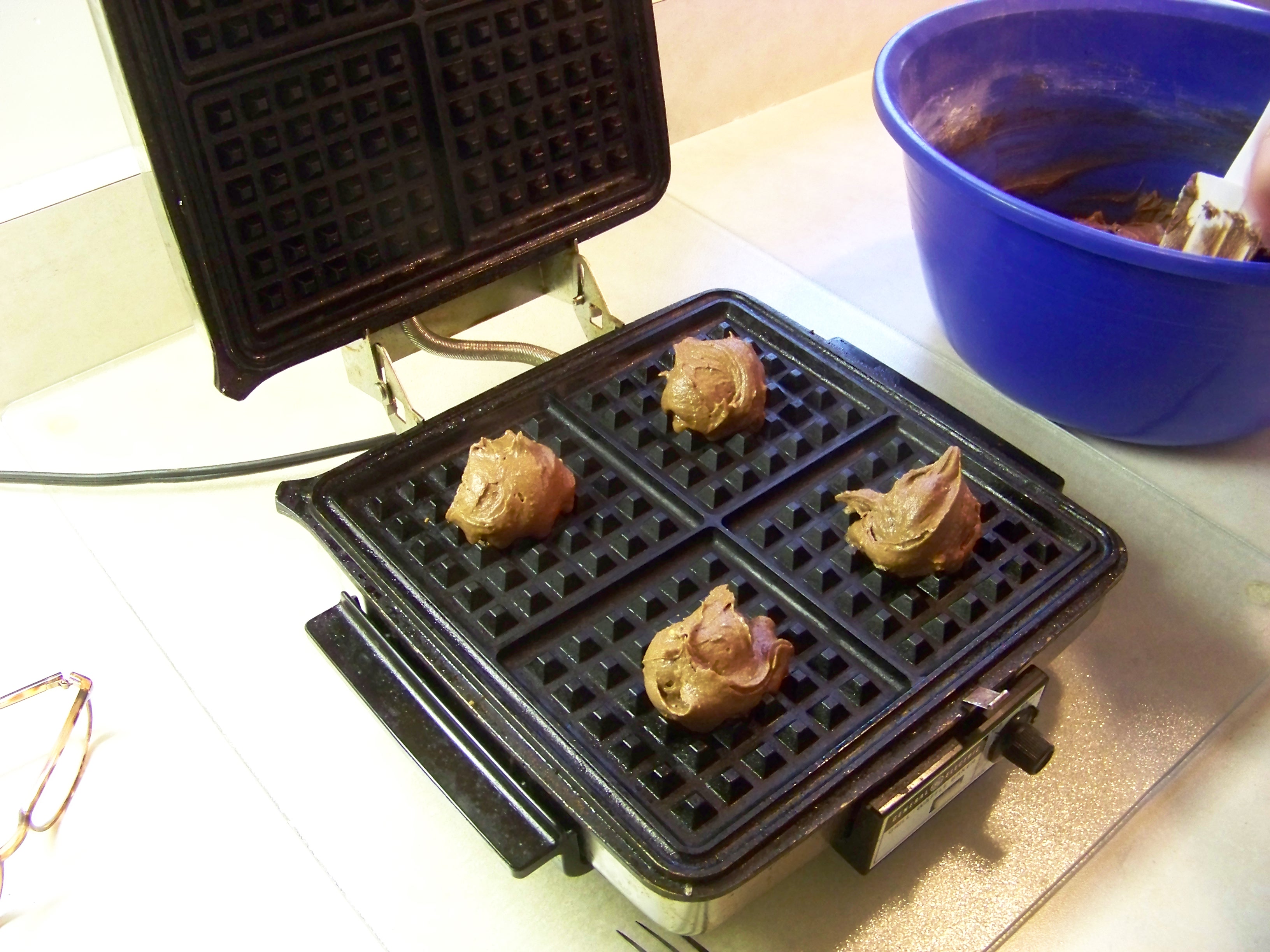
http://sweet-as-sugar-cookies.blogspot.ca/2011/05/guest-post-chocolate-waffle-iron.html
